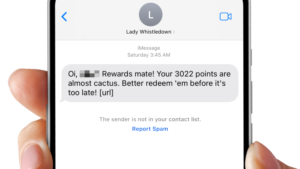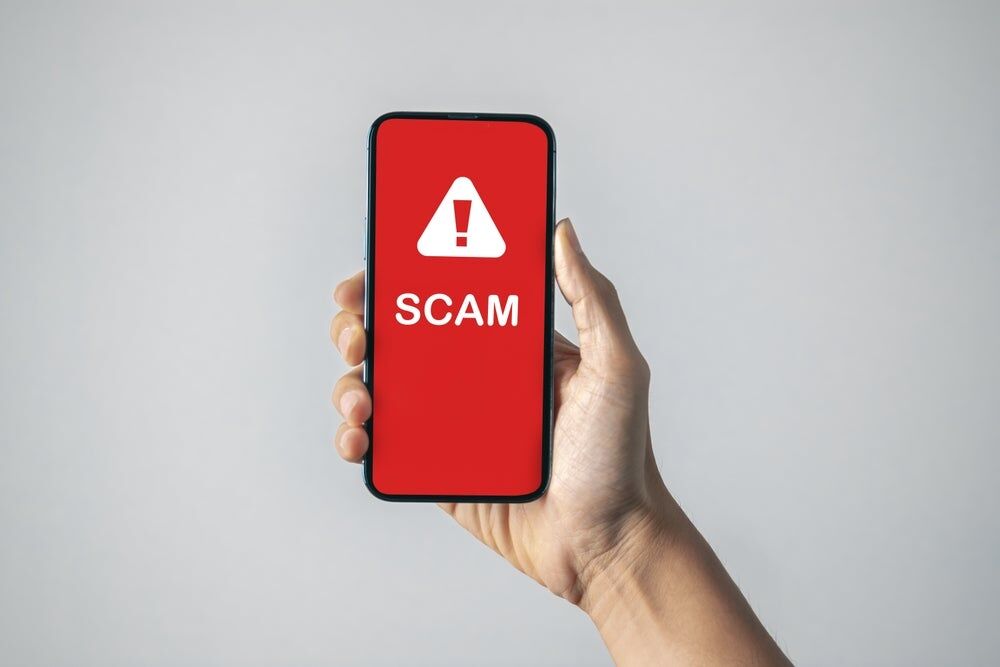New data from Telstra has revealed which days you’re most likely to be targeted by scammers and how they’re using AI to dupe Aussies out of their hard-earned money.
In a recent report, the telco said Fridays and Saturdays see 11% more scam attempts than any other day of the week, with most scam text messages coming through between 1am and 4am.
Telstra said scammers target people in the early hours of the morning when they’re more likely to accidentally click a link in a text message or respond to a request for money without thinking it through first.
Scammers have also started using AI programs to trick Australians into thinking the message has come from a local number, using phrases such as ‘oi mate’, ‘true blue’ and ‘cactus’, albeit with mixed results.

Source: Telstra (2024)
AI has seen a sharp rise in popularity over the past 12 months, with the availability of free tools like ChatGPT making it easier for scammers to generate personalised messages to target Aussies on a larger scale.
Most common scam in Australia
Text messages are the most common type of scam in Australia, followed by emails and phone calls. Most scam messages target people with links to malware, ransomware or phishing, or include requests for money.
While many of us like to think we’d be able to spot a fake SMS, numbers from ScamWatch show that Aussies lost more than $476 million to scammers in 2023 alone.
Older Australians are particularly vulnerable to scams. Of the 95,000 scams reported in 2024 so far, 23,000 were submitted by over-65s, who have lost close to $5 million to scammers in the past six months.
But while the number of scam texts being sent is on the rise, so is the number being intercepted and blocked.
In 2023 alone, Telstra says it blocked an average of 11 million scam texts each month — a 69% increase on the previous year. The telco also blocked 11% more calls in 2023 than in 2022, while in the first quarter of 2024 it blocked approximately 25% more SMS scams on average compared to the second half of previous year.
New Sender ID Register to combat scammers
On June 26, the federal government introduced legislation to pave the way for a new register to help Australians identify scam messages. The register aims to intercept SMS impersonation scams – where scammers act as legitimate and well-known brands such as banks, government agencies and retailers.
The register would allow telcos to check whether messages being sent under a brand name correspond with the legitimate sender and either block or add warnings for headers that don’t match.
Assistant Treasurer and Minister for Financial Services Stephen Jones said the register “will make it harder for scammers to target victims through text messages”.
He added: “Scammers are heartless criminals, and our government is determined to make it tougher for them to operate and target victims in Australia.”
Most common types of scams
- Phishing: Scammers try to steal your personal information via suspicious links, emails and phone calls.
- False billing: A fabricated bill or request for payment for a product or service that you have not purchased.
- Identity theft: After successful phishing attempts, scammers will steal your identity in order to access your bank account and/or other assets.
- Online shopping scams: Fake websites that offer incredibly discounted prices or sales for products and services that they don’t actually offer.
How to avoid getting scammed
Consumers should be wary of messages that create a sense of urgency or fear. Scammers often use these tactics to pressure individuals into acting quickly without thinking. Taking a moment to pause and assess the situation can prevent hasty decisions that lead to falling victim to scams.
Telstra’s top advice to protect against scammers:
- Stay informed: Keep up-to-date with the latest scams through resources like Scamwatch and Telstra’s Active Scams page.
- Be cautious with links: Avoid clicking on links in unsolicited texts or emails. Instead, verify the message through official channels. If something seems off, it probably is.
- Use security features: Enable features like spam filters and two-factor authentication on your devices. These tools provide an extra layer of protection against potential scams.
- Report suspicious messages: If you receive a suspicious text and you’re with Telstra, you can forward it by either copying it and sending it to 7226 or by using the Report Junk feature on an Apple device. You can also report scams to Scamwatch, or if you’re with another service provider, check its website for information on how to report it to them.


Share this article